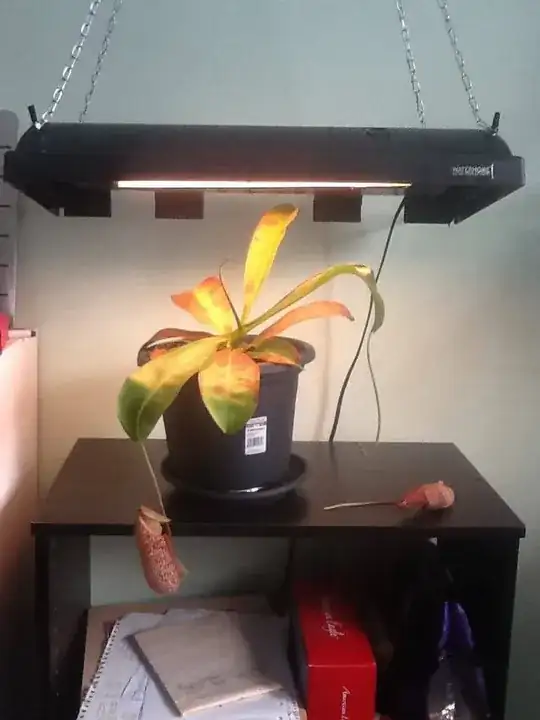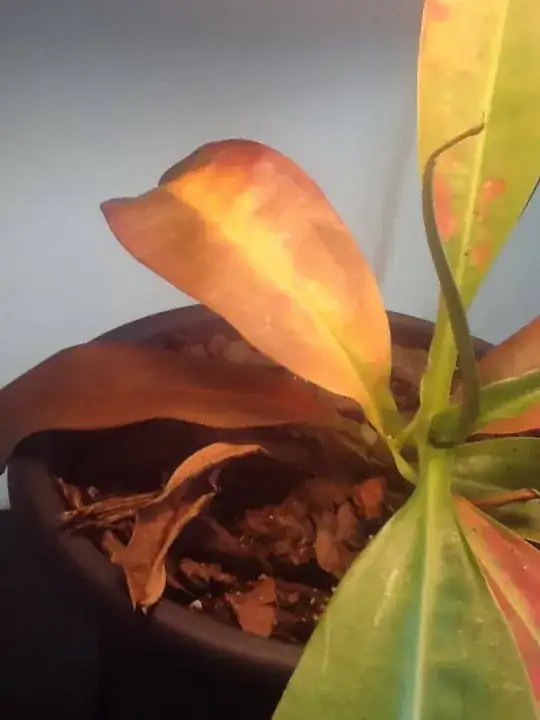I purchased a Nepenthes Miranda roughly over 6-7 months ago and for the first long while it was going super well. The leaves looked waxy and the pods grown were plentiful and large. It wasn't until maybe 2 months ago I noticed things were going wrong.
The waxy look to the plants leaves had started to fade and the pods seemed to stunt in growth. It wasn't long before the protective leaf atop the pod started to wilt and dry up followed by the rest of the pod in the following days. I decided to take my somewhat limited plant knowledge into account and trim off her dead pod at the very top of the vine in hopes the drying/rotting wouldn't spread unto the rest of the plant.
Unfortunately it didn't end there, all the pods fell in line having the same fate as the first. Currently it has one pod that's only just opening up and two pods on the way. The rest of the pods have died and been cut off. I then started to notice the leaves that didn't sprout pods in the first place were starting to wilt and go brown.
I then wasn't sure if I should trim those off (so they are still on the plant). When I purchased the plant it had a couple of dried out dead leaves attached at the base and I never trimmed them off out of fear there was a reason the seller didn't, as he seemed quite passionate about the plants.
I kept it in living conditions I researched and found suitable for the plant. I had an old fish terrarium laying around, so for the longest time I kept my Nepenthes in there. I turned the light on when I woke up in the morning and turned it off before I went to bed to try to emulate daytime/nighttime cycles for the plant. I watered it every time the soil felt dry and even put the lid of a cheese grater under the pot so there wouldn't be any sitting in water. I also used osmosis water and nothing but osmosis water.
Sadly my Nepenthes has out grown the terrarium and after a lot of research I learned that the Miranda can live outside of one so shortly after the repotting process I set her on my bookshelf and got my father (a carpenter) to take the lid of the terrarium with the light and fixture it above my plant.
I live in Canada so you can imagine why I don't want to sit a tropical plant by the windowsill for its sunlight. I'm worried perhaps my room isn't humid enough or that it's getting too little/too much water and sunlight.
Oh and I also feed the plant freeze-dried crickets which I read from multiple sources work best for these plants if you don't live in a bug infested home. I only gave her one in a random pod at a time until I saw it was visibly disintegrated because the crickets were fairly large. I have currently discontinued giving the plant any crickets because it has just been repotted and is still going through stress.
Any help on this matter would be much appreciated!
The current set up, you can see one of the withered pods I just cut off.

The leaves that are drying out and dying.
